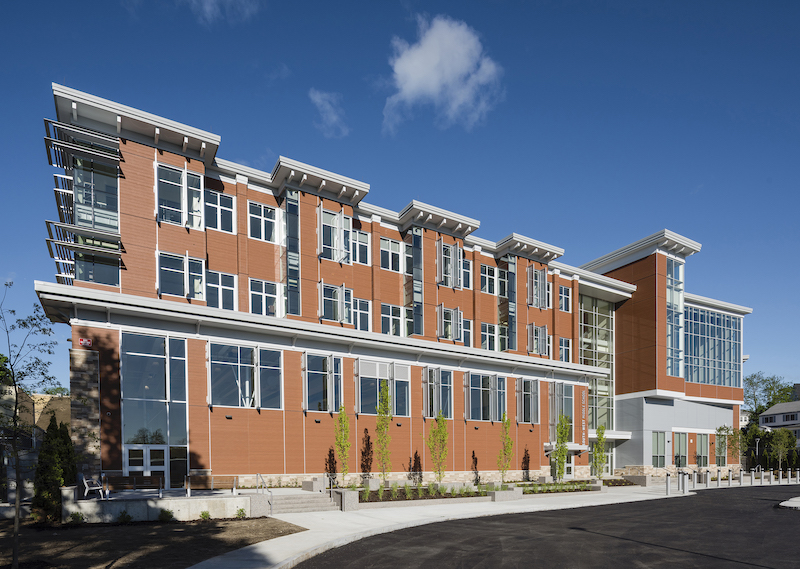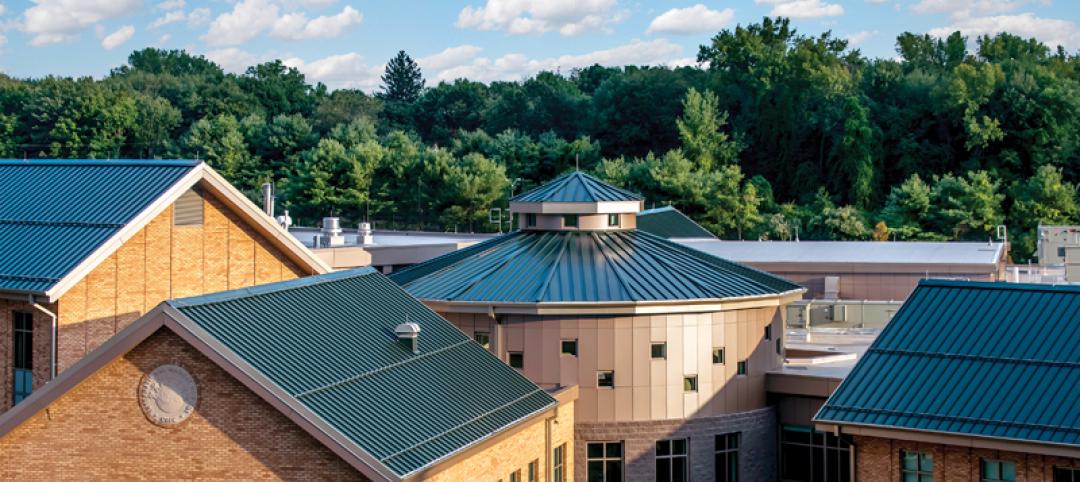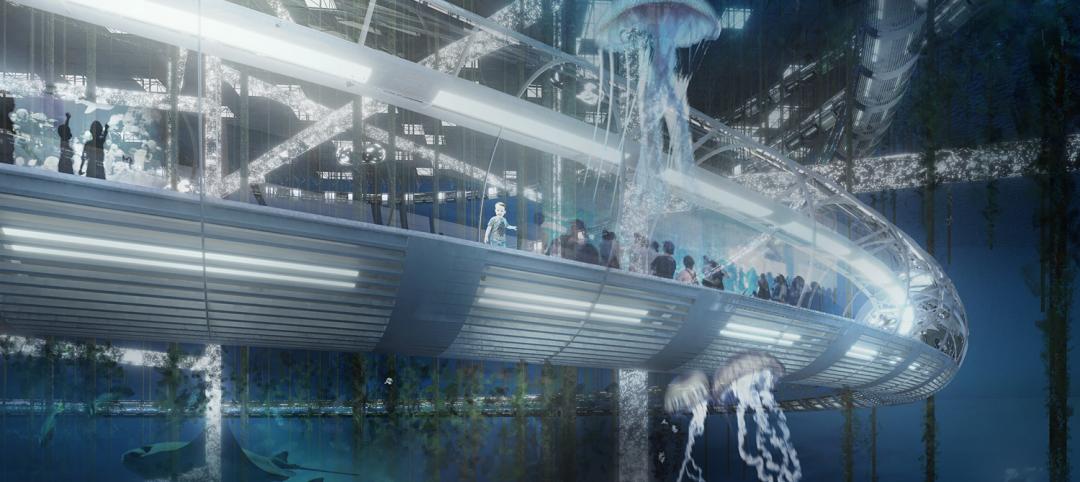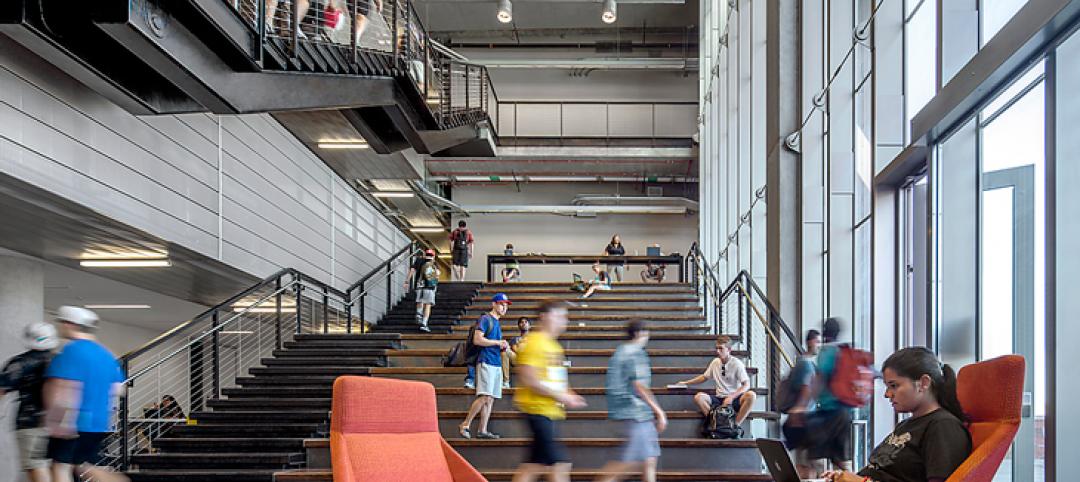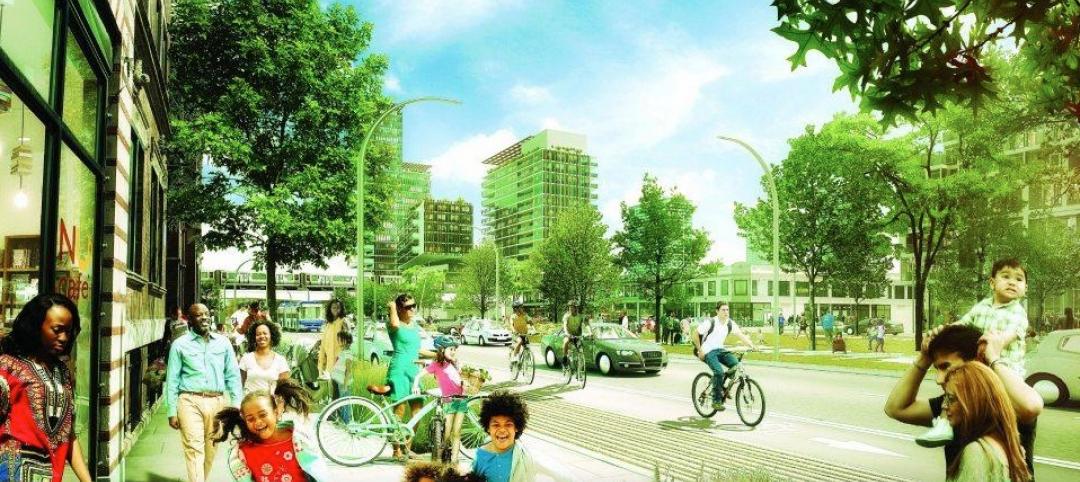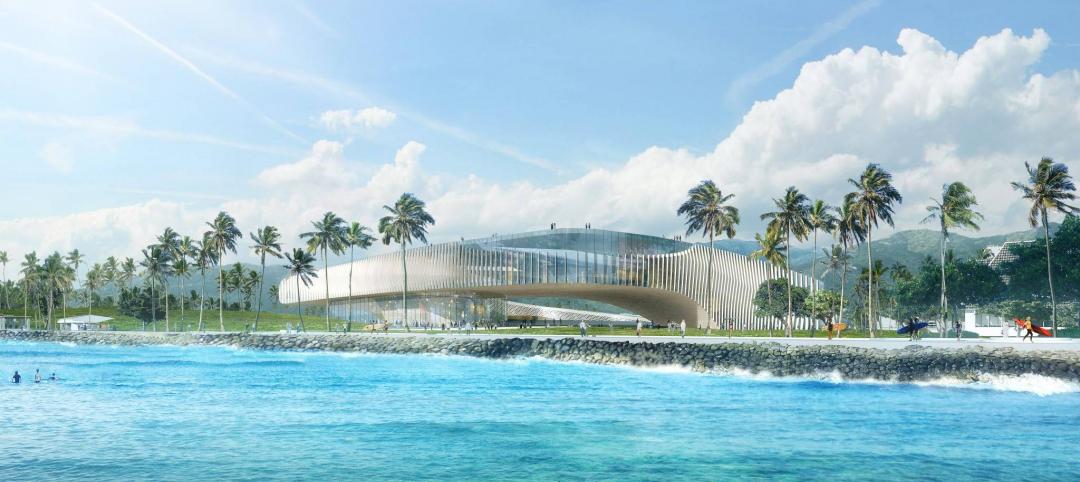South-West Middle School, located in Quincy, Mass., is a $58 million, 96,000-sf facility meant to “usher in the next generation of learning.”
The building features collaborative learning spaces, a media center, gymnasium, music and art rooms, administrative offices, a cafe, and an auditorium. STEM circulation zones encourage project-based learning and an open floor plan and glass walls create a synergetic environment. The glass walls are equipped with an electrified film that turns it opaque with the flip of a switch, making it impossible to see who is inside a classroom, an added safety measure in the event of a lockdown.
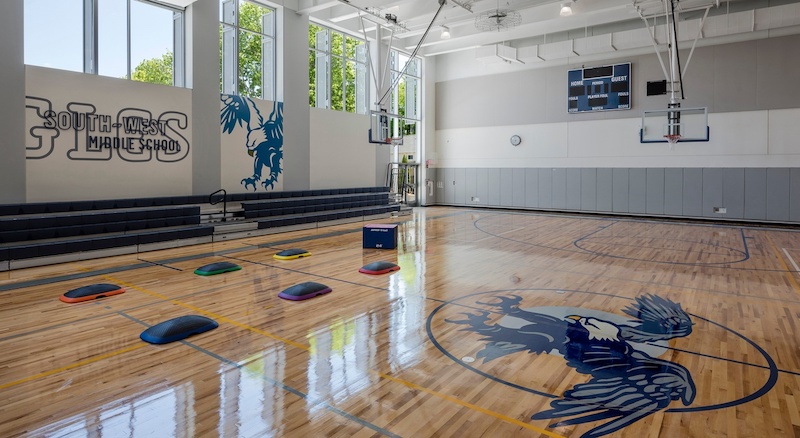
“Building off the growing trend of innovative and modernized schools, the light-filled spaces and technology-rich classrooms allow this new building to facilitate a high-quality of student engagement for the next generation of learning,” said Robert Murray, BOND (the project’s general contractor) President.
See Also: COX Architecture and Zaha Hadid Architects will design the Western Sydney Airport
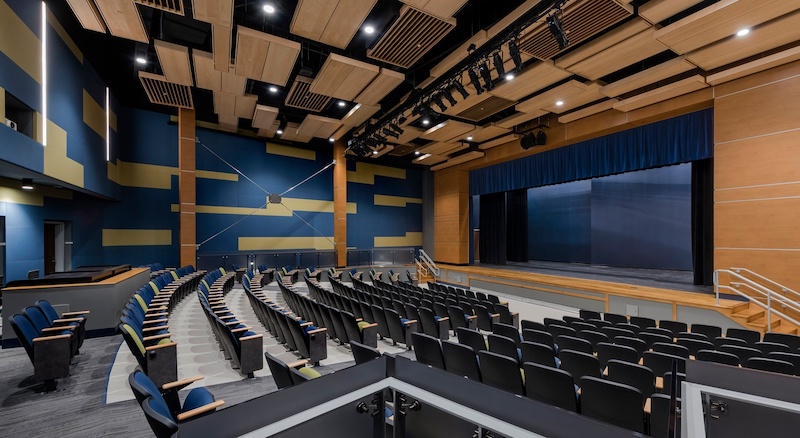
Because the new school is being built directly behind the old school, BOND used the opportunity to facilitate classroom learning sessions with South-West Middle School students to coincide with project milestones and STEM curriculum. A student-led Junior Building Committee met with BOND employees, went on hardhat tours of the site, wrote reports, and shared updates with their classmates and the school’s website throughout the construction process.
The school welcomed its first students for the 2019 school year.
Related Stories
University Buildings | Feb 17, 2015
BD+C exclusive: How security is influencing campus design and construction
Campus crime—whether real or perceived—presents Building Teams with more opportunities for early-stage consultation with university clients.
Sponsored | Roofing | Feb 11, 2015
New school blends with local architecture using Petersen metal roof
Perkins Eastman in Stamford, Conn., designed the school to emphasize and integrate the International Baccalaureate curriculum throughout.
Architects | Feb 11, 2015
Shortlist for 2015 Mies van der Rohe Award announced
Copenhagen, Berlin, and Rotterdam are the cities where most of the shortlisted works have been built.
Cultural Facilities | Feb 6, 2015
Under the sea: Manmade island functions as artificial reef
The proposed island would allow visitors to view the enormous faux-reef and its accompanying marine life from the water’s surface to its depths, functioning as an educational center and marine life reserve.
Cultural Facilities | Feb 5, 2015
5 developments selected as 'best in urban placemaking'
Falls Park on the Reedy in Greenville, S.C., and the Grand Rapids (Mich.) Downtown Market are among the finalists for the 2015 Rudy Bruner Award for Urban Excellence.
Higher Education | Feb 3, 2015
Integrated Learning Neighborhoods: A solution for linking student housing with the typical student experience
Just as urban housing fits into the city as a whole, student housing can be integrated into the campus network as a series of living/learning neighborhoods, write Gensler's Brian Watson and Mark McMinn.
| Jan 7, 2015
University of Chicago releases proposed sites for Obama library bid
There are two proposed sites for the plan, both owned by the Chicago Park District in Chicago’s South Side, near the university’s campus in Hyde Park, according to the Chicago Sun-Times.
| Jan 7, 2015
4 audacious projects that could transform Houston
Converting the Astrodome to an urban farm and public park is one of the proposals on the table in Houston, according to news site Houston CultureMap.
| Jan 6, 2015
Snøhetta unveils design proposal of the Barack Obama Presidential Center Library for the University of Hawaii
The plan by Snøhetta and WCIT Architecture features a building that appears square from the outside, but opens at one corner into a rounded courtyard with a pool, Dezeen reports.
| Jan 2, 2015
Construction put in place enjoyed healthy gains in 2014
Construction consultant FMI foresees—with some caveats—continuing growth in the office, lodging, and manufacturing sectors. But funding uncertainties raise red flags in education and healthcare.


